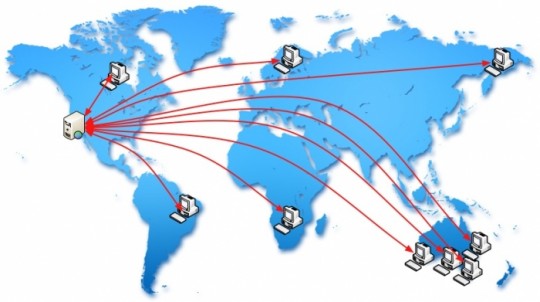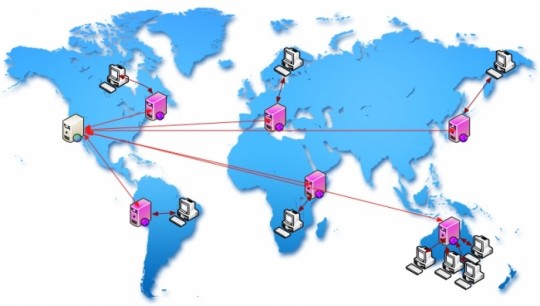What Is A CDN And How It Can Speed-Up Your Site
CDN stands for Content Delivery Network and to put it quite simply, it's a collection of interconnected web servers distributed across the globe. The intention of this infrastructure is to serve the visitors of a website from a web server nearby (hence much faster) instead of the main web server which could be located thousands miles away.
To give you a clear understanding of this concept, below you can see a picture of how content is distributed from your web server when you don't use a CDN for your website:

In other words a visitor coming from e.g., South Africa or Australia, would face increased page load time due to the distance, the propagation delay and the latency introduced. On the other hand if you use a CDN for your website, your visitors would be served according to the below:

A picture is a thousand words they say, so I think that the concept and the benefits of it, are visible. Of course when you use a CDN you don't offload your entire website to the servers of a CDN provider, but only the static assets such as images, javascripts, css, etc. So when a visitor requests a page there are two streams of data that work in parallel (instead of one stream requesting the entire content from your host's web server).
These streams are: One with your host's web server (that delivers the actual content) and one with the CDN server that delivers the static assets. This also means that the HTTP requests to your host's web server are decreased which in turn means that the long distance part of the equation is now lighter in bandwidth demand than what it used to be.
If you think that integrating a CDN to your website is expensive or difficult to set-up, you are wrong in both cases. There are a number of CDN providers out there (some better than the others) and it's up to you to choose which one suits you best. The prices for 1TB of bandwidth are, on average, around $20 (quite affordable) and for most websites this could last for about a year.
Regarding the set-up, again it's quite easy because you can do it using the W3 Total Cache that I mentioned earlier. Once you select a CDN provider, you will also find very easily instructions on how to set-it up in W3 Total Cache. In most cases it's a matter of 2-3 minutes (end-to-end) to integrate a CDN to your website and enjoy the benefits of it.
Let me know if you have any problems in general or with a specific CDN provider. I have tested quite a few.
Running with the CDN though is a massive improvement for most people, I now run most sites with static content on cloudfront and the difference is out of this world.
FYI Cloudfront have added Sydney Australia to their CDN... makes them a winner in my book!
Nice guide though.
i tried a few more pics to "smush" and now they show up "BLANK" how do i get them back? this does NOT work
case in point:
http://bonestrivia.com/bones-season-eight-begins/bones-season-eight
this is one pic "smushed" out of about 12 that i tried this on. how do you reverse this ??????
i guess i have to redo that work completely if I want pictures to show UP








